Ellesmere Port Basin
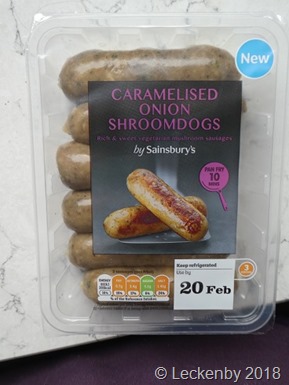
 Sunday morning, a cooked breakfast with a difference. We’d spotted in Sainsburys some mushroom saugsages, Shroomdogs, and thought we’d give them a try. They were nice, low in fat (although you have to pan fry them), but we’d rather have proper sausages, or if being good, turkey ones, but they were nice for a change.
Sunday morning, a cooked breakfast with a difference. We’d spotted in Sainsburys some mushroom saugsages, Shroomdogs, and thought we’d give them a try. They were nice, low in fat (although you have to pan fry them), but we’d rather have proper sausages, or if being good, turkey ones, but they were nice for a change.
I got to have a bit of an explore, not that there is much on this island. Somehow she thought I was up to no good, no idea what made her think that!
Once I’d seared the outside of a joint of Silverside and sat it on top of some onions and carrots in the cast iron pot, given it a tipple of red wine, I sat it on the stove top to slowly cook whilst we had a look at the rest of the museum.
A narrowboat sat in the top lock ready to do a lock demonstration, smoke could be seen rising from one of the cottage chimneys and a couple of ladies were walking round in period dress. There was certainly more activity going on today than yesterday, the volunteers were out in numbers.
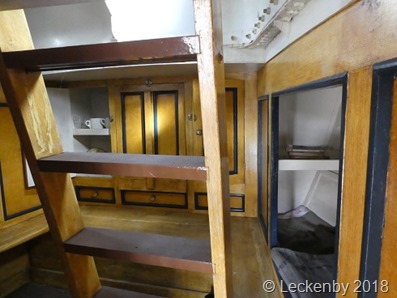
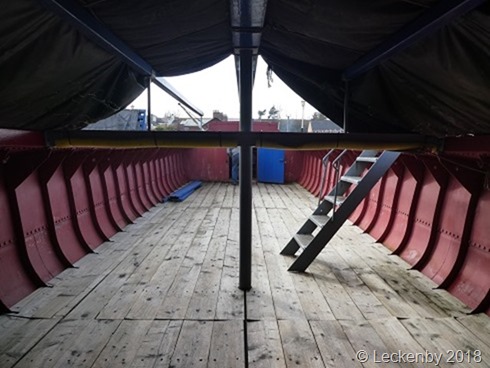 We took time to look around the boats moored outside. The amount of space you get in a Leeds Liverpool short boat is vast, if we ever upgraded to a fat boat I’d want one of these.
We took time to look around the boats moored outside. The amount of space you get in a Leeds Liverpool short boat is vast, if we ever upgraded to a fat boat I’d want one of these.
A group of volunteers were getting ready to move George, another short boat, out from under cover. George is one of the last horse drawn short boats, therefore has no engine so was going to have to be poled and pulled out from her position. Ropes were being attached to a pontoon bridge which connects the Island Warehouse to the Toll House. We decided to take a seat and watch what was going on.
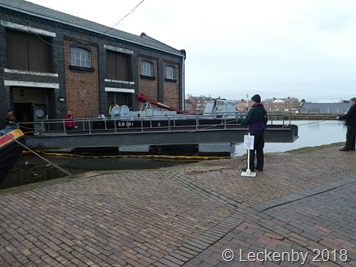
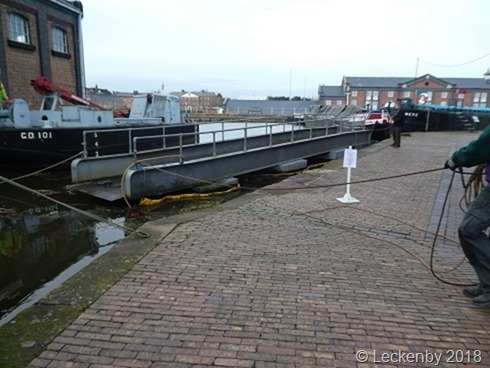 Containers under the pontoon needed to be pumped out so that it could be floated out of the way, this was going to take time so we watched the lock demo for a bit. However having already done 721 locks with Oleanna there was nothing said that we didn’t know already.
Containers under the pontoon needed to be pumped out so that it could be floated out of the way, this was going to take time so we watched the lock demo for a bit. However having already done 721 locks with Oleanna there was nothing said that we didn’t know already.
The narrow locks were built with problems. The top chamber is getting on for 8/9 feet deep the second one maybe only 5 feet. This means that there is an excess of water and the bottom lock and pound above were prone to flooding, added to this that the bottom lock is around 8 inches lower than the pound above it most probably flooded every time it was used. A channel was added linking the intermediary pound to the one between the two broad locks. This meant that the water had a much larger area to level itself out. As we came down the locks I’d noticed water coming in from the broad side and the bottom narrow lock did look like it was going to flood the towpath and surrounding area, it didn’t due to the underwater channel.
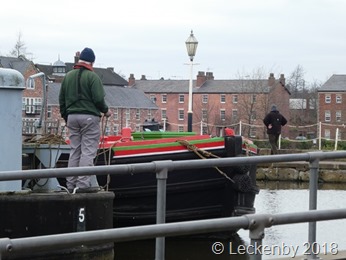
 Once the bridge was moveable it was pulled across and tied up to the side, then it was George’s turn to move. Ropes were flung across to waiting volunteers and a lady poled her from the stern. From where we were it was very obvious that the gap left was far too narrow to get such a broad boat through, but they carried on, realising the bridge would need to move some more. Juggling boats here must have been such a nightmare when there were still the sunken boats about, today it was hard enough.
Once the bridge was moveable it was pulled across and tied up to the side, then it was George’s turn to move. Ropes were flung across to waiting volunteers and a lady poled her from the stern. From where we were it was very obvious that the gap left was far too narrow to get such a broad boat through, but they carried on, realising the bridge would need to move some more. Juggling boats here must have been such a nightmare when there were still the sunken boats about, today it was hard enough.
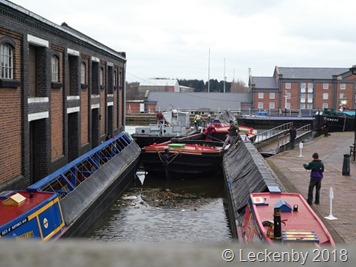
 We moved up onto a bridge and from our higher position we could see that more space was needed, but we refrained from calling out directions and left it to the volunteers. Eventually after nudging boats about they got George clear and to the top of the locks where they would need to turn her. There were already too many people helping so we decided we’d be better off inside the museum and left them to it.
We moved up onto a bridge and from our higher position we could see that more space was needed, but we refrained from calling out directions and left it to the volunteers. Eventually after nudging boats about they got George clear and to the top of the locks where they would need to turn her. There were already too many people helping so we decided we’d be better off inside the museum and left them to it.
George will be going out onto the Ship Canal on Wednesday, from where she will be taken onto the River Weaver and taken to Northwich where she will be getting a fresh coat of blacking on her wooden hull.
The upper floor of the Island Warehouse is filled with even more interesting things.
NB Friendship is the centre piece and she deserves to be.
Built by Sephtons at Hawksbury Junction for Joe and Rose Skinner in 1924 she was a horse drawn narrowboat. She cost £300 and the Skinners paid an initial £140 the remainder being gradually paid off by weekly 10 shilling instalments. NB Friendship became their home for over 50 years. Joe purchased Dolly their Mule from the US army at the end of WW1, she was a faithful worker giving 40 years of service. She fell into the Oxford Canal and then developed pneumonia which sadly led to her being put down. Without Dolly it wasn’t the same and with motor boats everywhere it was hard to compete, so they decided to retire at the end of 1959. Even though they had a house at Hawksbury Junction they continued to live on board NB Friendship using the house to store Joe’s scrap and occasionally cook Sunday dinner.
They would go to boat rallies and in 1973 they did their last long trip to Northampton, Joe was now in his 80’s. Joe died following a stroke in 1975 followed a year later by Rose. They had been married 56 years. Friendship was left to Rose’s niece, by 1978 enough money had been raised to bring the boat to Ellesmere Port. Much work was needed, but it was decided that it would be best to store her on dry land and retain the original boat as much as possible. To get her to her location in the museum she had to be cut in half and craned onto the first floor, rolled into position on scaffolding bars where she was put back together.
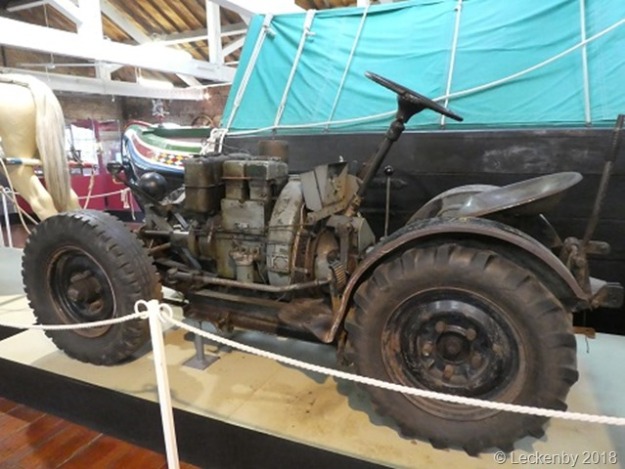
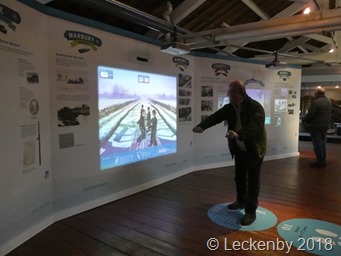
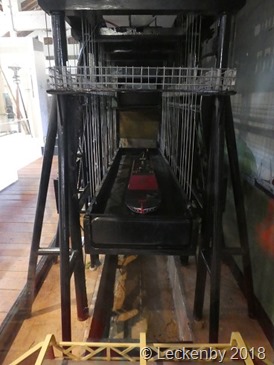 On this floor there is so much, you can rock an ice breaker, I managed to clear 5.3m of ice. You can look around a wooden cruiser, virtual tours of several other boats, watch footage of the Telford Warehouse burning to the ground in 1975. Listen to a navvie having a break, look at wooden patterns that were used for casting lock pieces, 1:24 scale models of hulls and try counting the number of granny squares it took to cover Rainbow.
On this floor there is so much, you can rock an ice breaker, I managed to clear 5.3m of ice. You can look around a wooden cruiser, virtual tours of several other boats, watch footage of the Telford Warehouse burning to the ground in 1975. Listen to a navvie having a break, look at wooden patterns that were used for casting lock pieces, 1:24 scale models of hulls and try counting the number of granny squares it took to cover Rainbow.
A good information packed afternoon and we feel that we most definitely got our moneys worth. We could even have returned for some more as we found ourselves skipping over parts. Another £4 to moor another night and some chilled medication to walk back to Oleanna with. Tomorrow when we leave the museum will be closed, so no gongoozlers to help push gates.
Our pot roast beef was delicious, we’ll defiantly be doing that again.
0 locks, 0 miles, 1 more night, 1 moor hen, 4 shroomdogs, 48 hours of lights, 8+ to move a bridge and boat, 2 more voices not needed, 94 years old, 1 special boat, 5.3m, £300, 5 boaty craft stalls, 283 squares, 1 super tasty joint of beef, 1 hearth rug finished.

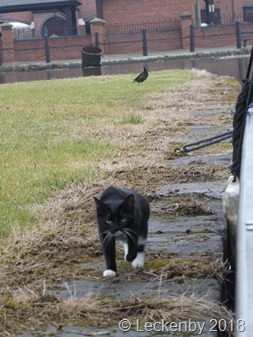
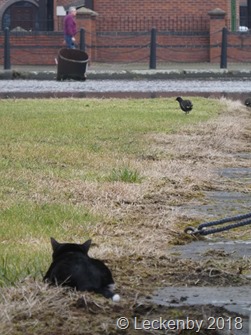
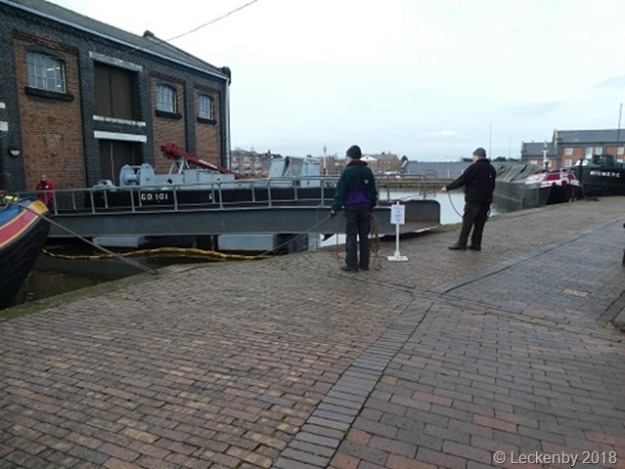
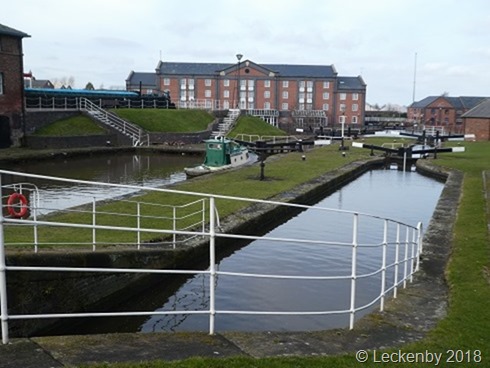
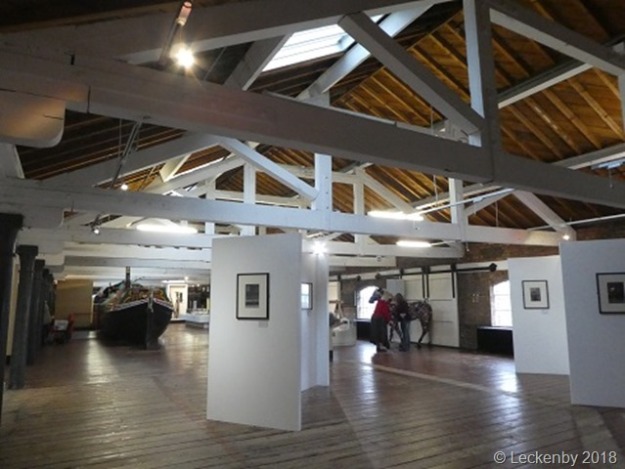
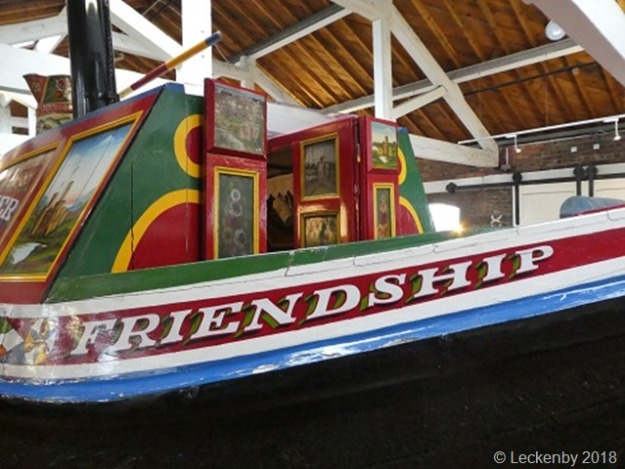
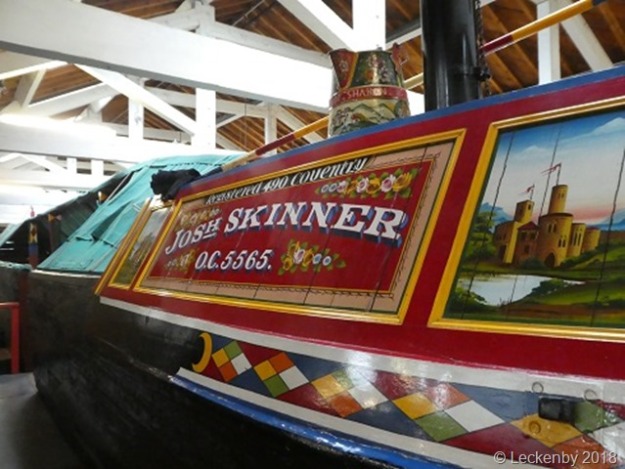
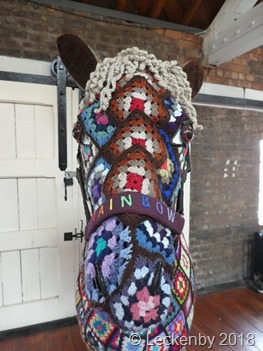

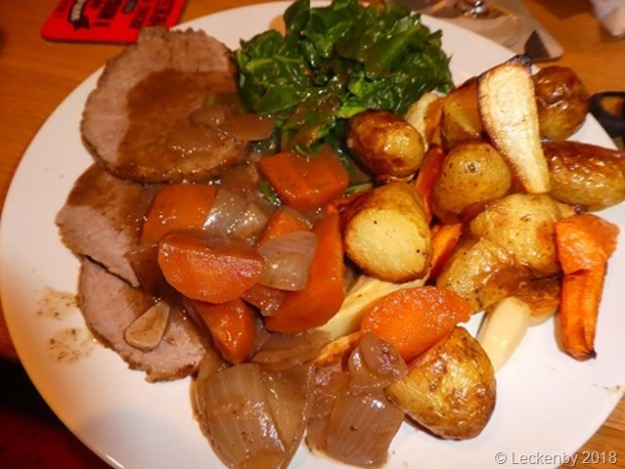
Gosh that dinner looks good! I'm inspired for something similar for dinner.Interesting about Hawkesbury, how sad there's not a reference at Hawkesbury Junction about NB Friendship (I must have missed it if there is). Friendship's story could be a great advert for whetting people's appetite regarding our Inland Waterway's history. These stories should be linked somehow, expanding people's interest.